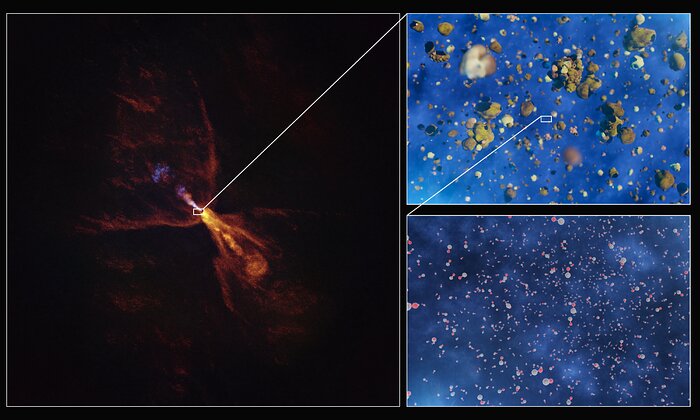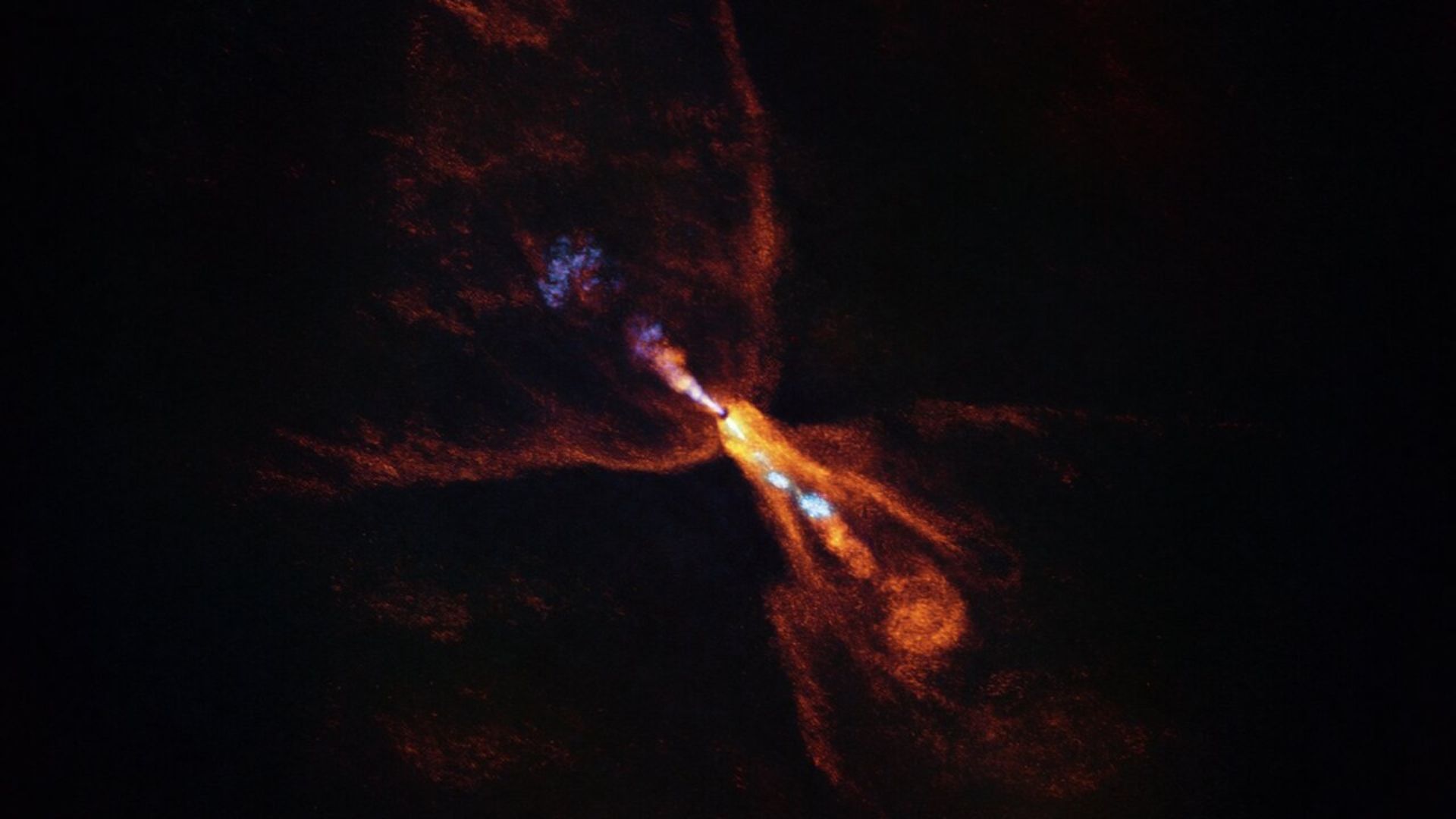New Delhi: Astronomers have observed the moment that planets begin to assemble around a newborn star. The observations were conducted by the ground-based Atacama Large Millimeter Array (ALMA) telescope in the deserts of northern Chile and the James Webb Space Telescope (JWST). The planetary system is being formed around a protostar designated as HOPS-315 at a distance of 1,300 lightyears from the Earth. Protostars are surrounded by flattened discs of gas and dust, made up of material falling into the new star, increasing its pressure and temperature till it can sustain the fusion of hydrogen into helium, marking the birth of a star. The planets are assembled in the leftover material surrounding it.

Formation of silicates around the baby star. (Image Credit: ESO/L. Calçada/ALMA(ESO/NAOJ/NRAO)/M. McClure et al.).
Astronomers have previously spotted young protoplanetary discs with massive gas giants similar to Jupiter in the process of assembly. Astronomers knew that there was a more primordial stage of planet formation when the first solid materials started clumping together in rocks and boulders. The earliest of these asteroids are made up of crystalline minerals containing silicon monoxide that can condense in the high temperatures within young protoplanetary discs. For the first time, astronomers have discovered evidence of these hot minerals beginning to condense in the disc around HOPS-315.
A window to the past
The minerals were first spotted by JWST, with localisation provided by ALMA. A paper describing the research has been selected for publication in Nature. Coauthor of the paper, Logan Francis says, “We’re really seeing these minerals at the same location in this extrasolar system as where we see them in asteroids in the Solar System.” The observations reveal what our own Solar System must have looked like in its infancy. One of the reasons scientists are so interested in studying asteroids, is because trapped within them is this primordial material from around the time the Sun was born. HOPS-315 also allows astronomers to better understand the earliest stages of a planetary system, with similar processes occurring around newborn stars across the galaxy.
